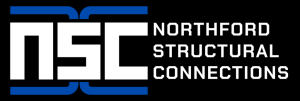Key Features of DTFC Flexible Connections Explained
In today’s advanced engineering landscape, Flexible Connections play a crucial role in numerous applications, from machinery to civil engineering. The DTFC, or Dual-Tension Flexible Connection, stands out as a notable example. Understanding the key features of DTFC Flexible Connections can help engineers and project managers make informed decisions regarding their usage and efficacy.
What are DTFC Flexible Connections?
DTFC Flexible Connections are designed to allow movement and absorb vibrations in various structures. They maintain structural integrity while accommodating the inherent flexibility required in numerous industrial applications. These components help ensure that machines and structures function smoothly despite environmental changes or operational stress.
Key Features of DTFC Flexible Connections
1. Dual-Tension Design
The hallmark feature of the DTFC is its dual-tension design. This concept allows for greater adaptability under varying loads. It can cope with tensile and compressive forces, making it ideal for dynamic environments where movements are prevalent.
2. High Tolerance for Movement
DTFC Flexible Connections are designed to accommodate substantial movement without compromising structural integrity. The ability to handle lateral, angular, and axial movements allows these connections to be used in environments subject to thermal expansion, seismic activity, or other shifting forces.
3. Vibration Dampening
One of the significant advantages of DTFC is its capability to reduce vibrations. High-frequency vibrations can lead to structural fatigue over time. The built-in vibration absorption characteristics of the DTFC arrest vibrations, thus prolonging the lifespan of machinery and contributing to its reliability.
4. Material Versatility
DTFC Flexible Connections can be made from various materials, each selected based on specific application requirements. Common materials include rubber, metal, and polymer composites. This versatility helps engineers choose the right material for optimum performance in different environments.
5. Ease of Installation
The design of DTFC Flexible Connections also emphasizes ease of installation. They can be quickly mounted in both new and existing structures. Their user-friendly design reduces downtime and ensures that projects stay on schedule.
6. Maintenance-Free Operation
Many DTFC Flexible Connections are designed to be maintenance-free. This aspect is particularly advantageous in applications where access is limited or where regular maintenance may disrupt operations. Less maintenance contributes to lower operational costs and enhanced reliability.
7. Compatibility with Various Systems
DTFC Flexible Connections are compatible with various systems, including piping, HVAC, and structural frameworks. This compatibility makes them a go-to choice for engineers across different sectors, facilitating seamless integration into existing setups.
8. Customized Solutions
Engineers can customize DTFC Flexible Connections to meet specific needs. This adaptability is crucial for specialized applications that may not align with standard connection designs. Customized solutions maximize efficiency and performance.
Applications of DTFC Flexible Connections
The range of applications for DTFC Flexible Connections is vast. They find use in sectors such as:
1. Aerospace
In aerospace engineering, DTFCs contribute to the flexible frameworks often needed in aircraft design. They accommodate the forces exerted during flight, reducing stress on structural components.
2. Automotive
Automotive manufacturing employs these connections within suspension systems to absorb shocks and vibrations, enhancing the stability and comfort of vehicles.
3. Industrial Machinery
DTFC Flexible Connections are utilized in many industrial machines. From conveyor belts to assembly lines, they help prevent damage from movement while maintaining operational efficiency.
4. Construction
In construction, DTFCs allow for building designs that can withstand natural forces, such as earthquakes and high winds, while maintaining overall stability.
Conclusion
In summary, the key features of DTFC Flexible Connections—dual-tension design, high tolerance for movement, vibration dampening, material versatility, ease of installation, maintenance-free operation, compatibility, and customized solutions—highlight their importance across various industries. Understanding these features facilitates informed decision-making regarding their applications, enhancing project outcomes and operational efficiency.
As industries evolve, the demand for advanced Flexible Connections, such as DTFC, will only increase. These connections will continue to play a vital role in shaping engineering practices, ensuring a more efficient and resilient future in structural design.







